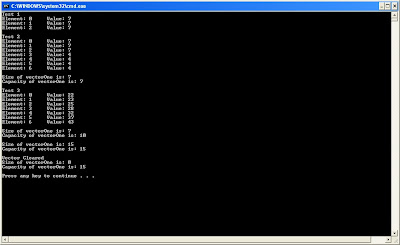//Program tested on Microsoft Visual Studio 2008 - Zahid Ghadialy
//This very simple example demonstrates the basic difference
//between struct and class in C++
#include<iostream>
using namespace std;
class A {
int a; //default in class is private
public:
int b;
void initVariables(int c1, int c2, int c3)
{
a=c1, b=c2, c=c3;
}
void printVariables()
{
cout<<"a = "<<a<<" b = "<<b<<" c = "<<c<<endl;
}
private:
int c;
};
struct B {
int a; //default in struct is public
public:
int b;
void initVariables(int s1, int s2, int s3)
{
a=s1, b=s2, c=s3;
}
void printVariables()
{
cout<<"a = "<<a<<" b = "<<b<<" c = "<<c<<endl;
}
private:
int c;
};
int main()
{
A var1;
var1.initVariables(10, 11, 12);
//var1.a = 15; //Cant be changed as its private
var1.b = 16;
//var1.c = 17; //Cant be changed as its private
cout<<"Printing the variables from the class"<<endl;
var1.printVariables();
B var2;
var2.initVariables(20, 21, 22);
var2.a = 25; //possible
var2.b = 26;
//var2.c = 27; //Cant be changed as its private
cout<<"\n\nPrinting the variables from the struct"<<endl;
var2.printVariables();
cout<<"\n\n";
return 0;
}
The output is as follows:













